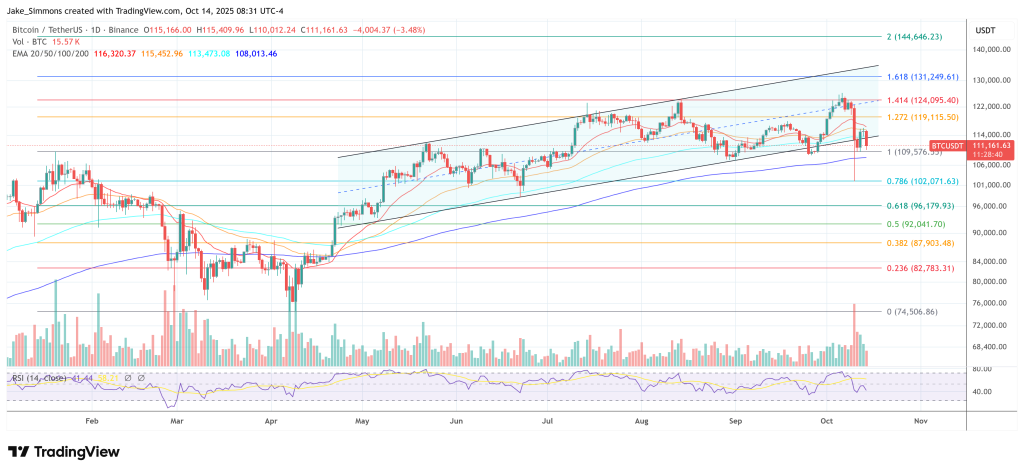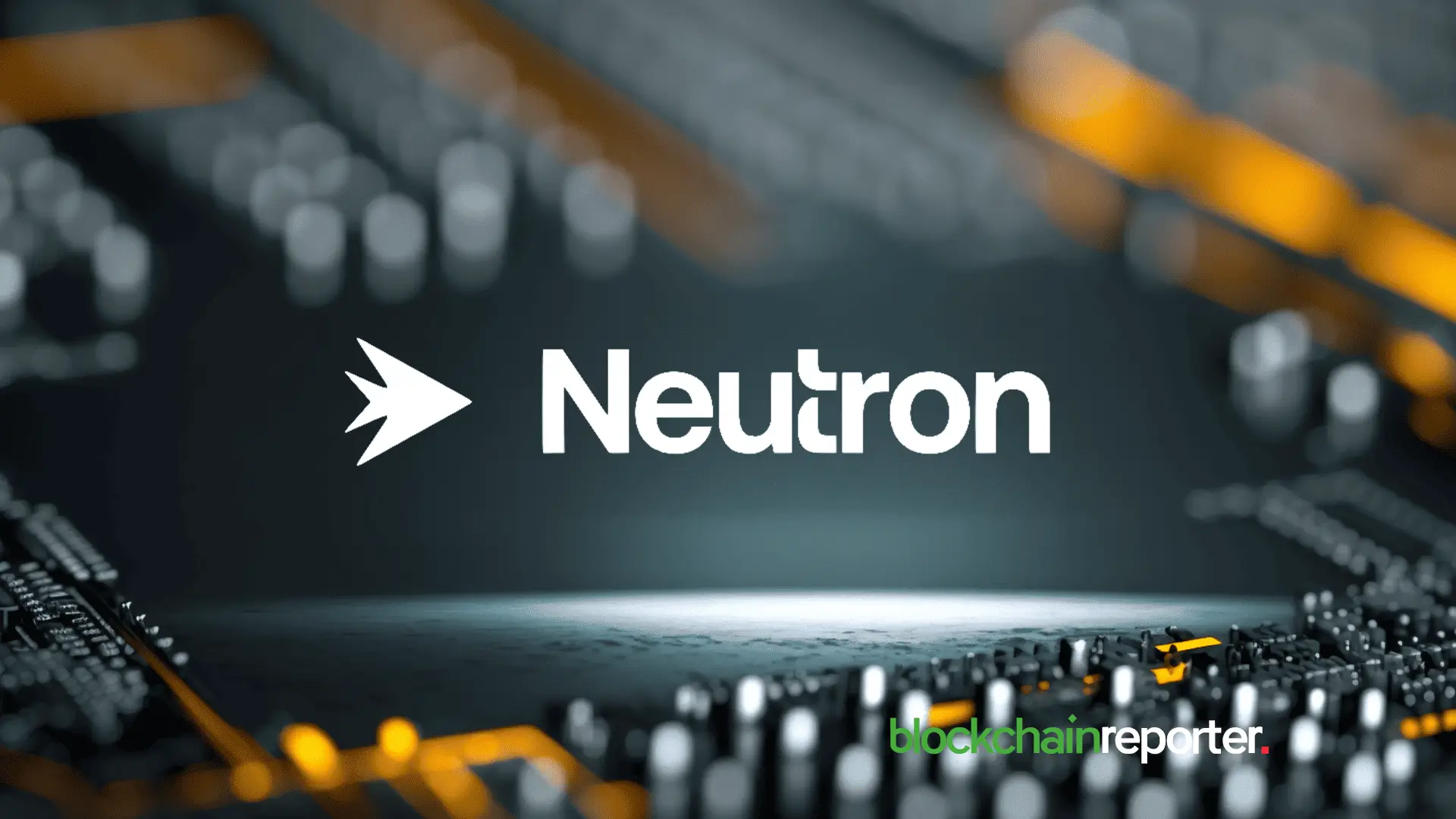Greatest Bitcoin Threat? Charles Edwards Predicts Quantum Break In 2–8 Years
At TOKEN2049 Singapore, Capriole Investments founder Charles Edwards set aside his well-known Bitcoin bullishness to deliver an unambiguous warning: a quantum “Q-Day” could arrive far sooner than most of the industry expects, with potentially existential consequences if Bitcoin’s core cryptography is not upgraded in time. “Within two to eight years, a quantum machine will break Bitcoin’s current encryption,” he told the audience, urging developers, companies and holders to treat the issue as urgent engineering, not distant theory.
Edwards framed Q-Day as the moment a sufficiently powerful quantum computer can break widely-used classical cryptography such as RSA—and, by extension, the elliptic-curve cryptography (ECC) underpinning Bitcoin’s public-private key model. “Q-day is the day in which a quantum machine will break classic encryption,” he said, adding that once that threshold is crossed, anything protected by those primitives—from financial networks to “sensitive data” and “of course Bitcoin”—is at risk. He asserted that Bitcoin’s ECC would likely fall sooner than RSA when the industry approaches that breakpoint.
Quantum Computing Could Break Bitcoin Within 8 Years
Pushing back on the common refrain that practical quantum attacks are decades away, Edwards argued the timeline has materially compressed, citing both rapid technical progress and a collective incentive among states and large firms to accelerate. “Even quantum years away. If you ask ChatGPT or Grok, it’ll tell you 10, 20, 30 years away. It’s rubbish,” he said. He pointed to quantum computer access already available via major cloud providers—AWS, Google and Azure—and its use cases in “drug discovery, defense, [and] optimizing bond yields,” presenting these as markers of real-world traction rather than laboratory demos.
Edwards anchored his 2–8 year forecast to a convergence of views he described as independent and sober. He referenced security specialist Jameson Lopp as assigning “50% risk in four to nine years,” a “math PhD doctor specializing in quantum” at “2 to six years for Bitcoin,” and McKinsey’s estimate for RSA-level Q-Day in “2 to 10 years,” reiterating his belief that “Bitcoin breaks years earlier than that.”
He also drew attention to a 2017 “Bitcoin quantum paper” that, in his reading, suggests “you only need 2,300 qubits—logical qubits—to break Bitcoin’s ECC,” noting its authorship by researchers affiliated with Microsoft, IonQ and Meta. While those numbers and affiliations were presented as evidence, his central message was less about any single study and more about the overall direction of travel: a multilateral “quantum arms race” that he said has already attracted “$55 billion” in commitments, with China “spending double the US.”
In Edwards’ telling, technological trendlines are compounding that investment wave. He described qubit growth as “basically a straight line in a log chart,” claiming it is “progressing faster than Moore’s law,” and likened today’s skepticism to the disbelief many held about AI adoption in 2021—right before chatbots went mainstream.
“Imagine 2021 and thinking about AI… You thought it was years away. So ChatGPT happened. I think we’re in a similar moment with quantum. It’s ignored today, but it’s coming.” He also highlighted a perceived shift in sentiment from Nvidia’s Jensen Huang, saying that after downplaying quantum timelines early in the year, Huang later called quantum at “an inflection point” and has been “spending billions buying quantum companies.” For Edwards, the takeaway is simple: “As always, follow the money.”
The operational risks Edwards outlined for Bitcoin were concrete and immediate. If adversaries can derive private keys from public keys exposed on-chain, coins sitting at addresses that have previously revealed public keys become vulnerable to theft. That set includes long-dormant “lost” coins and, potentially, some portion of Satoshi-era holdings.
“Satoshi’s coins will probably be market dumped,” he said starkly, not because their owner would necessarily act, but because the associated keys could be computed and the UTXOs swept once Q-Day arrives.
He contrasted dormant addresses with actively maintained wallets, arguing that modern key management and timely migration would reduce exposure: “We want to keep active wallets… it’s good to maintain security upgrades and relevancy of the tech through time.” He referenced Michael Saylor’s recent remark about doing “something ethically proper and burn[ing] his coins,” using it to underscore an inversion in perceived safety: “Actually burnt—the lost coins—the highest risk because no one has maintained that infrastructure.”
Beyond the cryptographic break itself, Edwards emphasized the logistical constraints of any industry-wide upgrade. Bitcoin can only process so many transactions per day, meaning a migration to quantum-safe addresses cannot be done overnight. “We have long lead times to upgrade Bitcoin,” he said.
“For Bitcoin itself it takes at least a month if you ignore all other transactions on the network to simply move everyone across to new wallets… so we’re looking at at least basically 6 to 12 months to fix this.” On that basis, he argued work on a concrete migration path cannot wait: “We need to be solving this really next year—2026—in order to get a solution before 2027.”
Edwards pointed to ongoing technical efforts as a starting point rather than a finished plan. “There’s solutions to protect crypto… There’s a few BIPs for example like this one… by Jameson Lopp. So there are solutions. We can solve this but there is an urgency to it.”
He called on developers to evaluate proposals for quantum-resistant schemes and on the broader community to “get talking to [the] community, your social media, get involved in the Bitcoin improvement proposals. Review them, give feedback, just get talking.” The subtext was that governance friction—social consensus, client implementation, wallet support, exchange coordination—becomes the gating factor once a candidate scheme is chosen, and that delay is itself a security risk if adversaries are on a clock of their own.
At press time, Bitcoin traded at $111,161.

You May Also Like

IP Hits $11.75, HYPE Climbs to $55, BlockDAG Surpasses Both with $407M Presale Surge!

Hadron Labs Launches Bitcoin Summer on Neutron, Offering 5–10% BTC Yield
